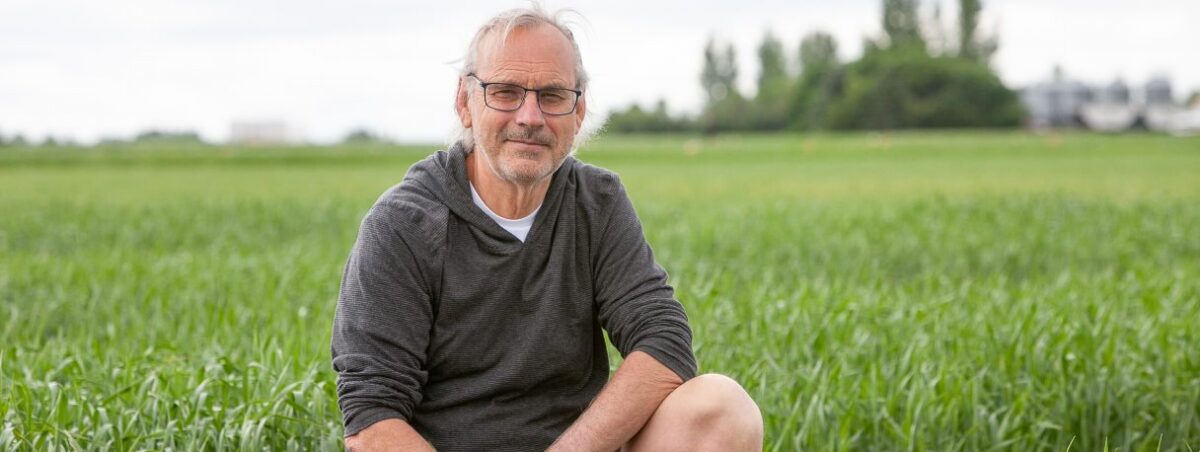Pierre Hucl, wheat breeder, University of Saskatchewan Crop Development Centre


Pierre Hucl is a wheat breeder at the University of Saskatchewan Crop Development Centre (CDC). He is also a professor of plant science and the Ministry of Agriculture Strategic Research Program Chair in CWRS Wheat, Specialty Wheats, and Canaryseed Breeding and Genetics.
Hucl began his undergrad in botany but eventually switched to plant science. He completed his master’s at the University of Guelph and worked for a couple of years as a peanut and coloured dry bean breeder there before moving to Saskatchewan to complete his PhD in wheat. Hucl has two daughters, one in Saskatoon and one in Winnipeg, and lives in Saskatoon with his wife.
Where did you work before the CDC?
I worked for the Saskatchewan Wheat Pool for about three-and-a-half years before I joined the CDC in 1990.
What got you interested in this area of work?
I think I’ve always had an interest in genetics without realizing it. I worked for a plant breeder at the University of Guelph for my first summer job in the discipline of crop science. I was working with dry beans and was given the responsibility of planting an international nursery. I was told it was mine and I needed to look after it from planting (by hand), hoeing in the summer, to harvest. Years later, a variety came out of that nursery that became the dominant white bean in Ontario. I saw the evolution from what came out of my original work – that’s kind of what piqued my interest.
Tell us a bit about what you’re working on at the CDC.
Plant breeding is a bit like miniature farming. Watching the weather radar, looking for hail, all those kinds of things, and dealing with the consequences of bad weather. My summer is spent in the field pretty well every day.
Then we come indoors in October and start dealing with field data and disease nursery data. I have to make decisions and decide what is going to move into the grain quality testing lab, for CWRS or any other type of wheat. I make decisions every day as the data comes in.
In terms of research projects, I do the statistical analysis to ensure things are working properly. As we finish our grain quality data collection for the breeding program, I decide what will move forward into the registration testing system. I make the decisions on what is going to go to the field at the CDC. In the past, I supervised graduate students. Currently, I sit on a number of graduate student advisory committees and chair a number of departmental administrative committees.
In one of our current projects, funded partially by Manitoba Crop Alliance, we are looking to develop higher-yielding CWRS varieties, while maintaining grain protein levels and baking quality. This project began in 2021 and has been funded for three years. We just completed reporting on the first test site from last year, not a whole lot of data mind you, but it was pretty clean statistically. We increased protein by 0.9 per cent and increased the dough strength, but decreased the yield by three per cent. Now we need to determine if we can pump these genes into some higher-yielding backgrounds and increase yields while keeping a decent quality profile.
What can you say about the value of farmers providing funding and support to your organization?
In this day and age, it’s critical. I am convinced that without check-offs and commission funding, many of the programs in the public sector would have disappeared a long time ago.
I think it’s important for breeders to have contact with the board members and get an idea of what’s important to farmers. It’s even more critical nowadays because in the old days, we used to have a lot of field days and we had a lot of direct contact with farmers. Now, a lot of that contact is made through social media and it’s very easy for people to end up in their own little academic silos.
How does that farmer funding and support directly benefit farmers?
I think the farmers can sway what direction breeding programs head and ensure that they work on problems they are facing on their farms. Whether it’s problems of disease, grading or new technology, for example.
How do you spend your time outside of work?
Before I had my spine fused, I was playing soccer five or six times a week. That was my mind clearing activity. In October last year, I started walking soccer.
What gets you most excited about your work?
To be able to start something from scratch – have the idea, execute it and maybe have it actually work. To me that is exciting; being able to be inquisitive and try different things.
What is your favourite food or favourite meal to cook?
I have lots of favourite foods. I’m big into seafood. I like a lot of things that are chewy like squid, jellyfish, chicken gizzards, all the things that gross out my daughters. But every week I cook a different pulse. That is something I started doing after I had surgery and was stuck at home for a few months.
